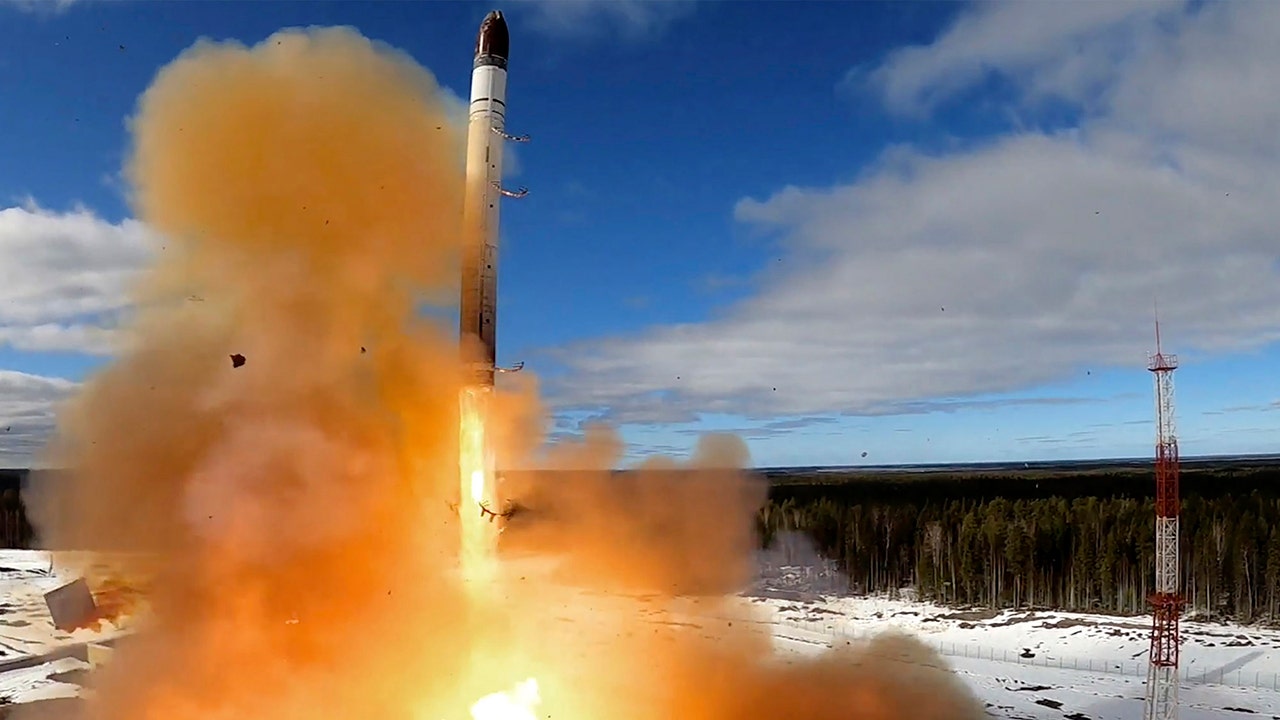Russia Successfully Tests Nuclear-Powered Poseidon Underwater Drone
President Putin confirmed Russia's successful test of the nuclear-armed Poseidon underwater drone, highlighting its unique nuclear propulsion, high speed, and massive warhead capabilities, which he claims are uninterceptable.
Subscribe to unlock this story
We really don't like cutting you off, but you've reached your monthly limit. At just $5/month, subscriptions are how we keep this project going. Start your free 7-day trial today!
Get StartedHave an account? Sign in
Overview
- President Putin announced Russia successfully tested its new atomic-powered and nuclear-capable underwater drone, Poseidon, marking a significant development in military technology.
- The Poseidon drone, described as a 'super-scary nuclear torpedo,' operates with nuclear propulsion, allowing it to travel at speeds up to 200 kph (124 mph) and at unmatched depths.
- Putin claimed the drone's nuclear reactor is significantly smaller than those on submarines, making it an engineering breakthrough and difficult to intercept.
- Russian officials reportedly stated the Poseidon is designed to explode near coastlines, potentially unleashing a powerful radioactive tsunami, and carries a warhead surpassing the Sarmat ICBM.
- This successful test underscores Russia's advancements in strategic weaponry, with Putin emphasizing the drone's unique capabilities and its role in national defense.
Report issue

Read both sides in 5 minutes each day
Analysis
Center-leaning sources frame this story by interpreting Putin's nuclear weapon announcements as strategic geopolitical messaging aimed at the U.S. and related to the Ukraine conflict. They emphasize the weapons' alleged destructive capabilities and Russia's intent to project power, using interpretive language and connecting the statements to recent international tensions without offering counter-perspectives or independent verification of claims.
Articles (4)
Center (1)
FAQ
The Poseidon is a nuclear-powered underwater drone approximately 25 meters long and 1.5 to 2 meters in diameter, capable of traveling at speeds up to 100 knots (about 110-124 km/h) at depths around 1000 meters. It uses a compact nuclear reactor smaller than those on submarines, enabling nearly unlimited range and endurance. It is armed with a nuclear warhead estimated at around 2 megatons.
Poseidon is unique due to its nuclear propulsion, allowing it to travel deep underwater at high speed, making it difficult or impossible to intercept with current defense systems. Its warhead is significantly more powerful than Russia's Sarmat ICBM warhead. It can generate a massive radioactive tsunami if detonated near coastlines, making it a strategic deterrent with potentially devastating effects.
Poseidon is designed as a submarine-launched uninhabited underwater vehicle capable of long-range intercontinental travel. It can be prepositioned on the seabed and activated remotely to target enemy coastal areas. Its purpose is to serve as a second-strike nuclear deterrent by potentially triggering radioactive tsunamis near coastlines, causing widespread destruction and contamination.
As of 2025, Russia has successfully tested the Poseidon drone running on nuclear power. Reports suggest a total of around 30 Poseidon systems distributed among four submarines, with projected deployment around 2027 according to available assessments. The submarine 'Belgorod' is built to carry Poseidon drones, enhancing Russia’s strategic capabilities.
Poseidon’s near-uninterceptable nature and massive destructive potential introduce new challenges for nuclear deterrence, as it can bypass existing missile defenses. Its ability to cause radioactive tsunamis changes strategic calculus concerning coastal security and may trigger arms race dynamics, complicating international nuclear stability and escalation risks.
History
- This story does not have any previous versions.





